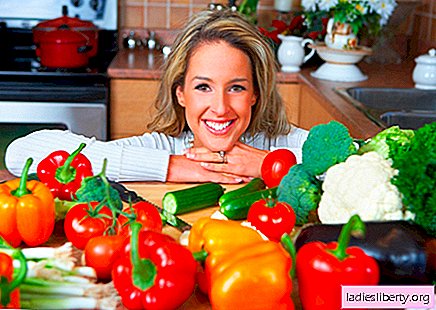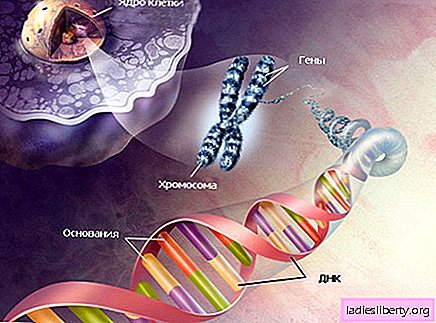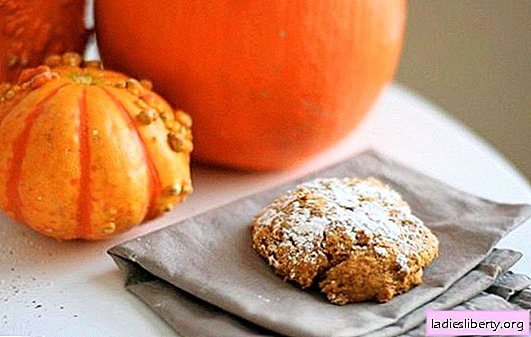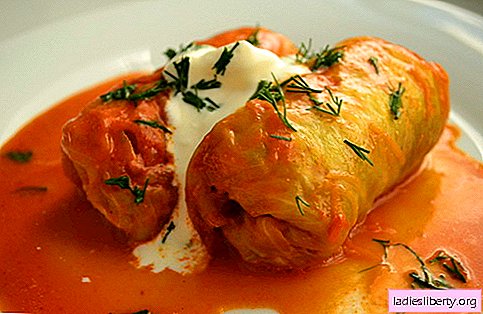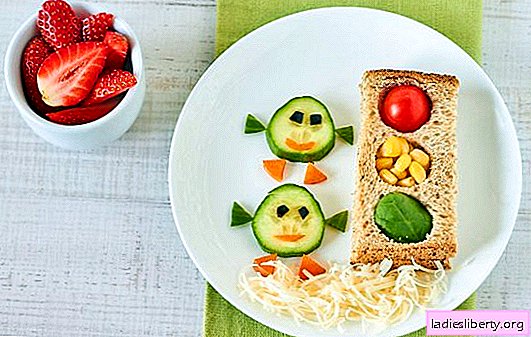
Among the striking variety of diets, the Traffic Light stands out for its fast stable result, taking into account the basic needs of the human body and the ability not to torment yourself with hunger or a specific diet. The diet is available at any time of the year, but is especially good for the summer with its splendor of seasonal fruits and vegetables.
Main principles
The duration of the traffic light varies from 1 to 4 weeks, with losses for every 7 days from 1 to 2.5 kg.
Losing weight is all the more expressive, the greater the initial body weight.
ATTENTION! If you start tomorrow, then by summer, lose 10-15 kg!
And to avoid confusion, it’s worth noting the following. Two "Traffic Lights" are known in the world. The first involves the division of all products into 3 categories:
- green - you can eat whenever you want, in any combination and quantity;
- yellow - allowed to eat 2-4 times a week, little by little and no later than 18:00;
- red - strictly prohibited for use.
The second "Traffic Light" is the fruit of the development of American scientists who proposed to lose weight on plant products in three colors - red, yellow and green.
The fact is that in addition to bright pigments, the chemical composition of many of them contains unique biologically active substances that can positively affect body weight and human health in general.
So the Traffic Light, which will be discussed later, is a hybrid of these two options.
Benefits
The benefits of this diet include:
- the opportunity is varied, tasty and satisfying;
- lack of need to count calories and BZHU;
- smooth weight loss that does not harm the body sagging skin;
- long-term preservation of the achieved result;
- weight loss as a result of a delicate restructuring of the body, and not its shock (as, for example, with a keto diet);
- maintaining good health and physical endurance;
- lack of stress due to leaving the comfort food zone.
There are also "bonuses" in the form of improving the condition of the skin, hair and nails, the functioning of internal organs, strengthening immunity.
Contraindications
Contraindications for the diet are:
- severe kidney disease;
- peptic ulcer of the stomach or duodenum;
- last trimester of pregnancy;
- pancreatitis
Rules
The basic traffic light rules are simple:
- Meals are allowed from 06:00 to 21:00.
- For cooking, boiling (preferably steamed), stewing, baking on the grill or in the oven is allowed.
- Four days a week should be cooked without salt.
- With a diet of 2 weeks or more, 1 day for each week is prescribed as unloading - only water and one product from the green list.
- Physical activity - from morning exercises and home fitness to jogging in the park, swimming and visiting the gym - are welcome.
- Drink 1.5-2 liters of pure non-carbonated water per day (it is allowed to replace 30% of the liquid with green tea and add a couple of cups of plain black coffee).
And regarding the drinking regime, it is important to note that scientists have refuted the myth that drinking mixed with food is harmful. On the contrary, a few sips will prevent the chewing products from sticking together in a lump in the stomach and facilitate the access of enzymes to them.
It is recommended to exit the diet within 5-10 days, gradually introducing products from the yellow and, last but not least, the red list into the menu.
Green list (absolutely valid):
- red fish;
- fat-free cottage cheese and kefir;
- low-fat varieties of hard cheeses and soft cheeses from goat, sheep’s milk;
- cereals (red and black rice, buckwheat);
- vegetable oil not refined;
- spices.
Naturally, this list goes on ... Colorful gifts of flora.
The green palette includes:
- Brussels sprouts, Savoy and broccoli;
- green beans;
- green pea;
- zucchini and zucchini;
- gooseberry;
- spinach, chard;
- okra;
- greenery;
- avocado;
- sugar apple;
- cucumbers
- celery;
- asparagus.
Green plants are saturated with many antioxidants, including chlorophyll, which:
- cleanses the body of toxins, waste and radiation;
- normalizes acid-base balance;
- improves the microflora of the digestive tract;
- prevents the absorption of fats and fast carbohydrates.
The yellow (with a slope in orange) palette includes:
- peaches;
- melons
- a pineapple;
- yellow cherries;
- cherry plum;
- quince;
- pumpkin;
- papaya;
- oranges
- squash;
- mango;
- zucchini;
- corn.
The main dye of yellow garden crops is beta-carotene, which is converted into vitamin A in the human body. It is necessary for the appearance of new cells, improve blood composition and saturate the epidermis with moisture, as well as for transmission of nerve impulses.
The red palette includes:
- watermelons;
- cherries;
- red plum;
- grenades;
- radish;
- red cabbage;
- strawberries, red currants, lingonberries;
- red eggplant;
- beet.
The range of bright colors from pink and lilac to red and purple is based on anthocyanins, which have the following effects:
- removal of excess salt and water;
- removal of edema and anti-inflammatory effect;
- activation of collagen synthesis;
- acceleration of energy consumption during physical exertion.
Also in any color (red, yellow, green) there are:
- apples
- Tomatoes
- pears
- grapes;
- bell pepper;
- bananas.
Yellow list (partially valid):
- separate whole grain flour products - pasta, dry tortillas, bread (in toasts). Recommended types of flour - wheat, rye, buckwheat, corn, oat, amaranth, barley;
- dried fruits;
- bitter chocolate;
- potatoes;
- carrot;
- cereals (oatmeal, corn, pearl barley);
- chicken eggs (can be replaced with quail in the proportions of 1: 5);
- veal, rabbit meat, white poultry fillet;
- beef liver.
Red List (Invalid):
- any products from white wheat flour;
- cakes
- mayonnaise, ketchup;
- packaged juices and sodas;
- milk;
- butter, margarine, lard;
- fatty meat, poultry skin;
- ice cream;
- cream cheese, sour cream, curds;
- all products with yeast (yes, provided they are low in calories);
- white rice, semolina, couscous;
- nuts
- fast food (burgers, french fries);
- alcohol;
- milk and white chocolate, sweets and sweets.

